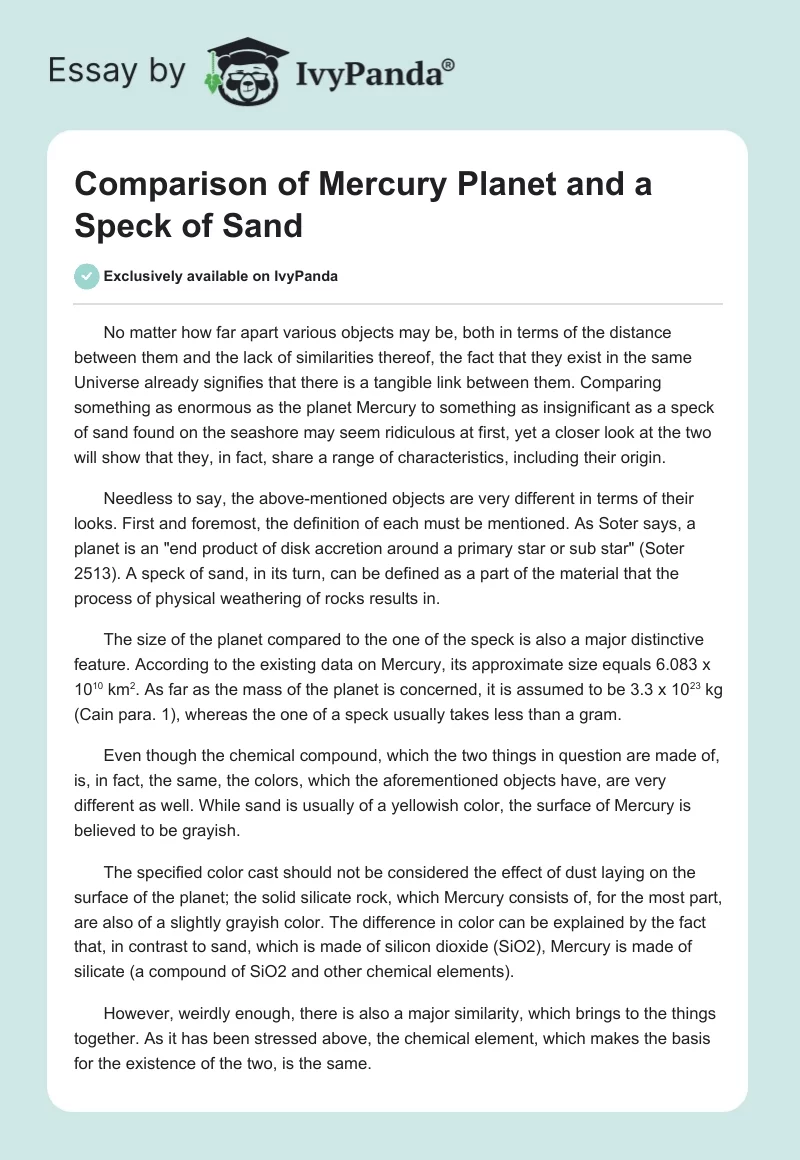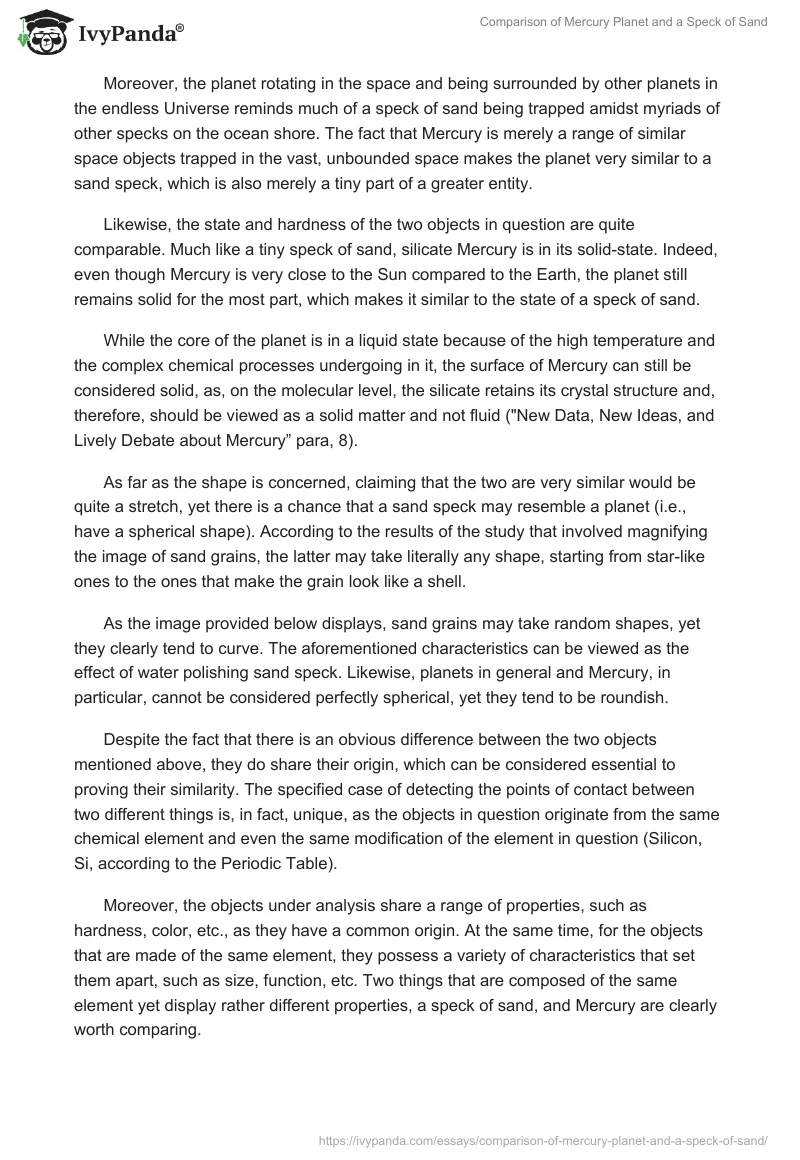No matter how far apart various objects may be, both in terms of the distance between them and the lack of similarities thereof, the fact that they exist in the same Universe already signifies that there is a tangible link between them. Comparing something as enormous as the planet Mercury to something as insignificant as a speck of sand found on the seashore may seem ridiculous at first, yet a closer look at the two will show that they, in fact, share a range of characteristics, including their origin.
Needless to say, the above-mentioned objects are very different in terms of their looks. First and foremost, the definition of each must be mentioned. As Soter says, a planet is an “end product of disk accretion around a primary star or sub star” (Soter 2513). A speck of sand, in its turn, can be defined as a part of the material that the process of physical weathering of rocks results in.
The size of the planet compared to the one of the speck is also a major distinctive feature. According to the existing data on Mercury, its approximate size equals 6.083 x 1010 km2. As far as the mass of the planet is concerned, it is assumed to be 3.3 x 1023 kg (Cain para. 1), whereas the one of a speck usually takes less than a gram.
Even though the chemical compound, which the two things in question are made of, is, in fact, the same, the colors, which the aforementioned objects have, are very different as well. While sand is usually of a yellowish color, the surface of Mercury is believed to be grayish.
The specified color cast should not be considered the effect of dust laying on the surface of the planet; the solid silicate rock, which Mercury consists of, for the most part, are also of a slightly grayish color. The difference in color can be explained by the fact that, in contrast to sand, which is made of silicon dioxide (SiO2), Mercury is made of silicate (a compound of SiO2 and other chemical elements).
However, weirdly enough, there is also a major similarity, which brings to the things together. As it has been stressed above, the chemical element, which makes the basis for the existence of the two, is the same.
Moreover, the planet rotating in the space and being surrounded by other planets in the endless Universe reminds much of a speck of sand being trapped amidst myriads of other specks on the ocean shore. The fact that Mercury is merely a range of similar space objects trapped in the vast, unbounded space makes the planet very similar to a sand speck, which is also merely a tiny part of a greater entity.
Likewise, the state and hardness of the two objects in question are quite comparable. Much like a tiny speck of sand, silicate Mercury is in its solid-state. Indeed, even though Mercury is very close to the Sun compared to the Earth, the planet still remains solid for the most part, which makes it similar to the state of a speck of sand.
While the core of the planet is in a liquid state because of the high temperature and the complex chemical processes undergoing in it, the surface of Mercury can still be considered solid, as, on the molecular level, the silicate retains its crystal structure and, therefore, should be viewed as a solid matter and not fluid (“New Data, New Ideas, and Lively Debate about Mercury” para, 8).
As far as the shape is concerned, claiming that the two are very similar would be quite a stretch, yet there is a chance that a sand speck may resemble a planet (i.e., have a spherical shape). According to the results of the study that involved magnifying the image of sand grains, the latter may take literally any shape, starting from star-like ones to the ones that make the grain look like a shell.
As the image provided below displays, sand grains may take random shapes, yet they clearly tend to curve. The aforementioned characteristics can be viewed as the effect of water polishing sand speck. Likewise, planets in general and Mercury, in particular, cannot be considered perfectly spherical, yet they tend to be roundish.
Despite the fact that there is an obvious difference between the two objects mentioned above, they do share their origin, which can be considered essential to proving their similarity. The specified case of detecting the points of contact between two different things is, in fact, unique, as the objects in question originate from the same chemical element and even the same modification of the element in question (Silicon, Si, according to the Periodic Table).
Moreover, the objects under analysis share a range of properties, such as hardness, color, etc., as they have a common origin. At the same time, for the objects that are made of the same element, they possess a variety of characteristics that set them apart, such as size, function, etc. Two things that are composed of the same element yet display rather different properties, a speck of sand, and Mercury are clearly worth comparing.
Works Cited
Cain, Fraser. “Characteristics of Mercury.” Universe Today. 2012. Web.
“New Data, New Ideas, and Lively Debate about Mercury.” NASA. 2011. Web.
Soter, Steven. “What Is a Planet?” The Astronomical Journal 132 (2006), 2513–2519. Print.


